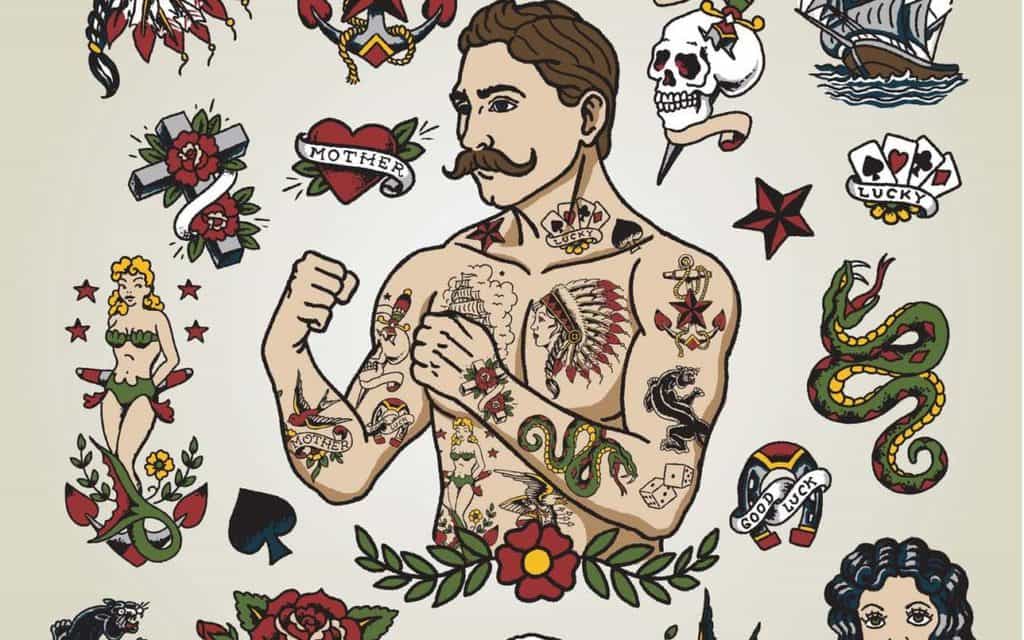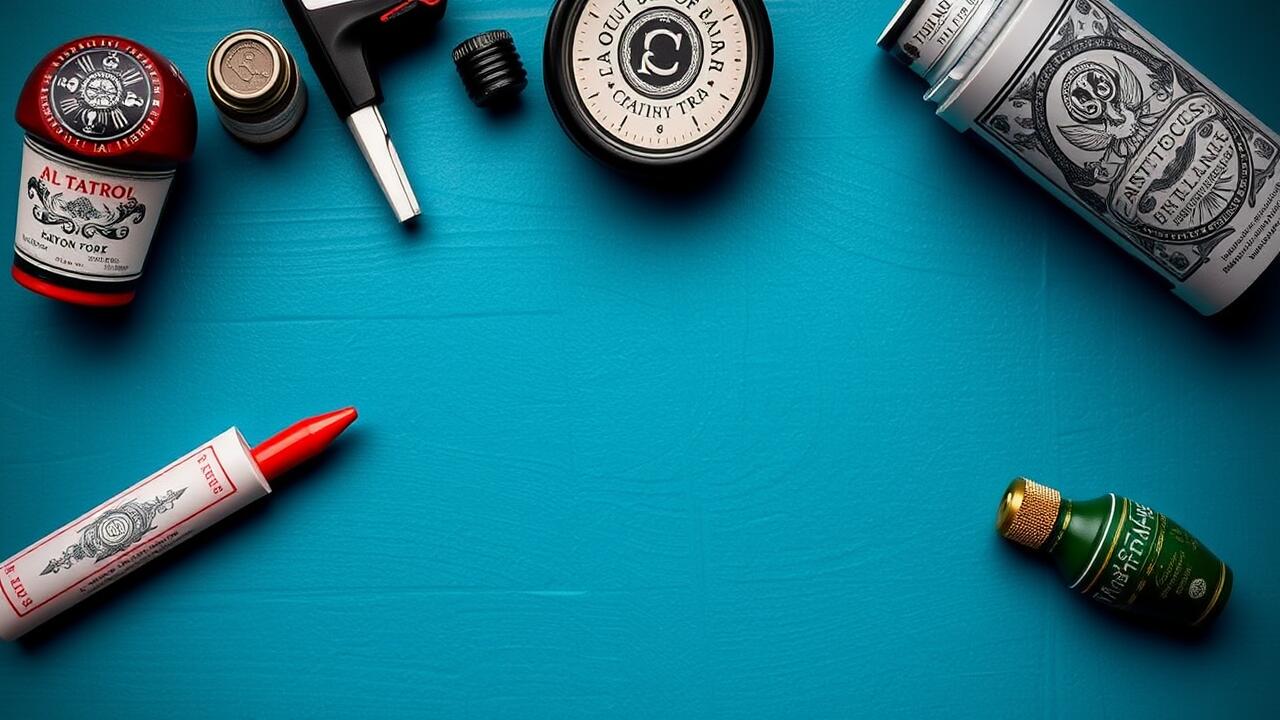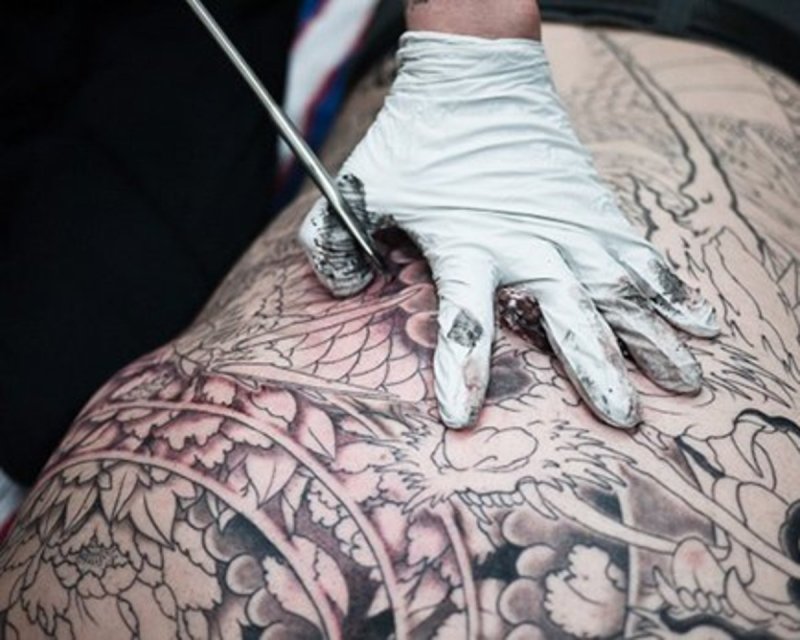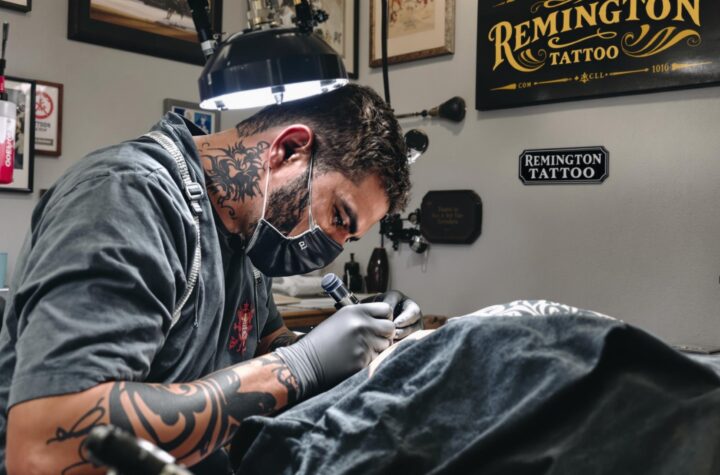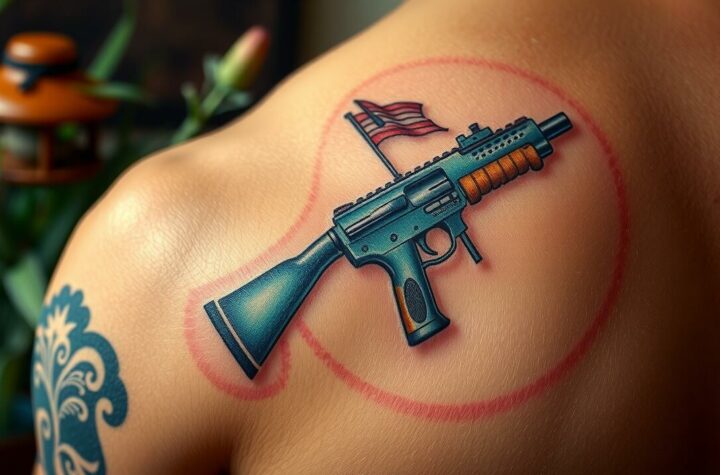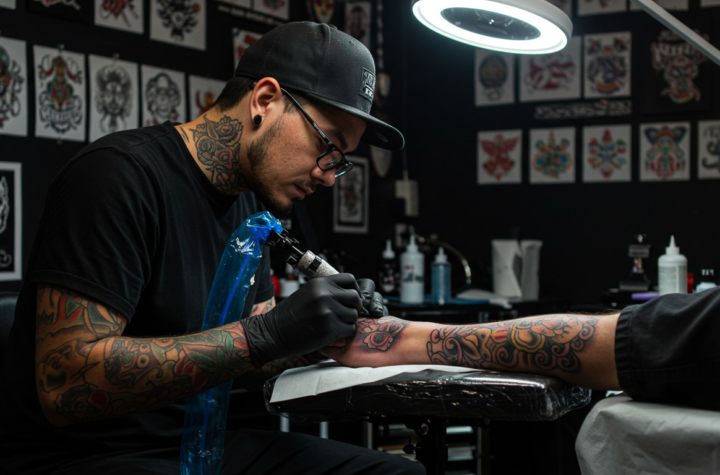The Origins of American Traditional Tattoos
During the late 19th and early 20th centuries, American traditional tattoos emerged as a distinct art form. These tattoos were characterized by their bold lines, vibrant color palette, and iconic imagery such as anchors, eagles, and sailor motifs. The origins of American traditional tattoos can be traced back to the work of tattoo artists like Sailor Jerry Collins, who played a pivotal role in popularizing this style.
Sailor Jerry Collins is often credited with revolutionizing traditional tattooing by introducing new techniques and designs. He incorporated elements from Japanese tattoos into his work, blending them with the classic American traditional style. This fusion resulted in an aesthetic that was both unique and visually striking.
The popularity of American traditional tattoos spread rapidly among sailors during this time period. Sailors would often get tattoos as a way to commemorate their experiences at sea or to display their affiliation with certain maritime traditions. These tattoos served as symbols of camaraderie within the sailor community and became synonymous with strength, bravery, and adventure.
In summary,
the origins of American traditional tattoos can be traced back to the late 19th century when tattoo artists like Sailor Jerry Collins began incorporating elements from Japanese tattooing into their work. This unique blend of styles gave birth to the iconic aesthetic characterized by bold lines and vibrant colors that we associate with American traditional tattoos today. Sailors played a significant role in popularizing this style due to their affinity for getting inked while at sea.
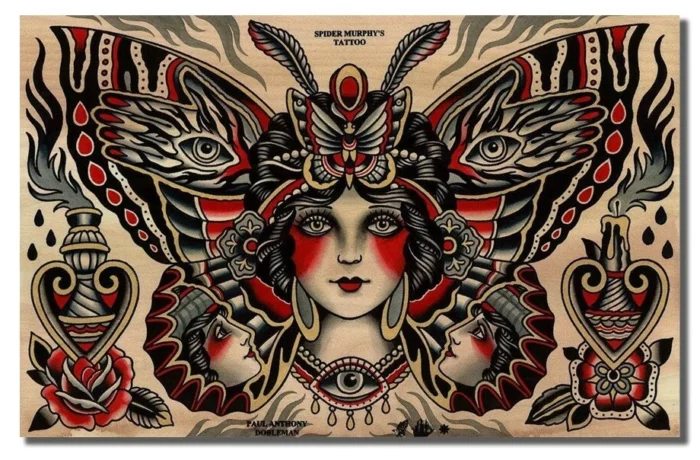
The Characteristics of American Traditional Tattoos
American traditional tattoos, also known as old-school tattoos, have a rich history that dates back to the early 20th century. These tattoos are characterized by bold black outlines and vibrant colors that create eye-catching designs. One of the key influences behind American traditional tattoos is the art of sailor Jerry Collins, an iconic American tattoo artist who popularized this style.
The origins of American traditional tattoos can be traced back to the tattoo shops located near military bases in the early 1900s. Sailors would often get inked with symbols and images that represented their experiences at sea, such as anchors or nautical stars. Another popular motif in American traditional tattoos is pin-up girls, which were inspired by illustrations found in magazines during that time.
The meaning behind American traditional tattoo designs goes beyond their aesthetic appeal. Each image carries its own symbolism, reflecting themes like patriotism or personal beliefs. The style of tattooing itself has become synonymous with Americana culture and has influenced other forms of modern tattoo art worldwide.
Despite evolving trends in the world of body art, American traditional tattoos continue to hold their ground as a timeless classic. Their distinct characteristics and historical significance make them highly sought after by enthusiasts today. Whether it’s paying homage to the roots of tattooing or embracing a vintage aesthetic, there is something captivating about these iconic pieces that continues to resonate with people around the globe.

The Spread of American Traditional Tattoos
The history behind cis rooted in the rich history of traditional tattooing style. These classic designs, characterized by bold outlines and vibrant colors, have become synonymous with American tattoo culture. The spread of American traditional tattoos can be attributed to the introduction of the electric tattoo machine in the late 19th century.
With the invention of the electric tattoo machine, artists were able to create intricate designs more efficiently than ever before. This innovation allowed for a greater number of certified tattoo studios to open across America, making it easier for enthusiasts to get their desired body art. As a result, American traditional tattoos became increasingly popular among individuals from all walks of life.
One notable influence on the spread of American traditional tattoos was its impact on Japanese tattoos. While Japanese tattoo masters had long been revered for their skill and precision in creating complex and detailed designs, they were also drawn to the simplicity and boldness of American traditional tattoos. This cross-cultural exchange led to a fusion known as neo-traditional tattoos – a style that combines elements from both traditions.
The spread of American traditional tattoos has not only impacted other styles but has also played a significant role in preserving and revitalizing other indigenous tattoo traditions. For example, Native Americans have embraced this classic American style while incorporating elements from their own cultural heritage into their designs. By doing so, they are able to honor their ancestors’ traditions while simultaneously embracing contemporary trends within the world of body art.
The Influence of American Traditional Tattoos on Japanese Tattoos
American traditional tattoos have had a significant influence on Japanese tattoos. The popularity of American traditional tattoos near the end of the 19th century and early 20th century played a crucial role in introducing this style to Japan. As Western culture began to permeate into Japanese society, so did the iconic American traditional tattoo aesthetic.
The brief history of American traditional tattoos can be traced back to sailors who traveled to Japan and brought back new tattoo techniques and designs. This exchange between cultures sparked an interest among Japanese artists, leading them to incorporate elements from American traditional tattoos into their own work. Today, many Japanese tattoo artists like Horiyoshi III are known for blending both styles seamlessly.
The influence of American traditional tattoos on Japanese tattoos is evident in the way they have influenced contemporary tattoo artistry in Japan. Traditional motifs such as roses, eagles, anchors, and pin-up girls that were popularized by early American tattooists can now be seen in modern Japanese designs. This fusion has created a unique type of tattoo that combines the boldness and color saturation of American traditional with the intricate details and storytelling aspects found in Japanese irezumi.
As we delve deeper into the world of tattoo history, it becomes clear that American traditional tattoos continue to captivate enthusiasts around the globe. Their influence on various cultures and subcultures cannot be understated; they have not only shaped contemporary Western tattooing but also influenced other styles worldwide. From their origins near naval bases to their continued presence today, it’s undeniable that these timeless designs hold a special place within the realm of body artistry.
The Influence of American Traditional Tattoos on Neo-Traditional Tattoos
The influence of American traditional tattoos on neo-traditional tattoos can be seen in the resurgence of classic tattoo aesthetics and traditional designs. Reputable tattoo artists have played a significant role in popularizing this style by incorporating elements from both American and traditional Japanese tattooing techniques. Millions of young American men, inspired by the rich history of tattooing, have embraced this style as a way to express their individuality.
One notable aspect of neo-traditional tattoos is the emphasis on bold lines and vibrant colors, reminiscent of the work done by skilled tattoo artists in various other styles. This infusion of old and new has created a unique blend that appeals to a wide range of individuals seeking a timeless yet contemporary look for their ink. Tattoo sleeves adorned with intricate motifs are particularly popular among those who appreciate the fusion between modern artistry and traditional tattoo culture.
As these new waves of artists continue to emerge, they draw inspiration from both past masters and present-day innovators. The influence of American traditional tattoos can be seen in how many tattoo artists like to pay homage to classic designs while adding their own creative twists. By combining elements from different eras and cultures, they create fresh interpretations that push the boundaries within the world of tattoo art.
Tattoos have also been found to hold deep personal meanings for individuals who choose them as an expression or reflection of their identity. As more people embrace neo-traditional tattoos, it becomes evident that this style not only captures attention but also resonates with diverse groups across society. The impact is far-reaching, extending beyond just aesthetic appeal into something much deeper – a celebration of tradition intertwined with contemporary artistic expressions.
What are American Traditional Tattoos?
American Traditional Tattoos, also known as Old School Tattoos, are a style of tattooing that originated in the late 19th century and became popular in the United States. They are characterized by bold, black outlines, limited color palettes, and iconic designs such as anchors, roses, eagles, and pin-up girls.
How did American Traditional Tattoos originate?
American Traditional Tattoos originated from the sailor tattoos of the late 19th century. Sailors would get tattoos during their travels, often using simple designs and bold outlines that could withstand the test of time. These tattoos later evolved into the iconic style we know today.
What are the characteristics of American Traditional Tattoos?
American Traditional Tattoos typically feature bold black outlines, limited color palettes (usually red, green, yellow, and blue), and a set of staple designs such as anchors, swallows, eagles, and hearts. They often have a vintage, nostalgic feel and are known for their timeless appeal.
How did American Traditional Tattoos spread in popularity?
American Traditional Tattoos gained popularity through the influence of sailors who traveled the world and brought the style to different ports. Additionally, tattoo artists like Norman “Sailor Jerry” Collins played a crucial role in popularizing the style through their tattoo shops and designs.
How did American Traditional Tattoos influence Japanese Tattoos?
American Traditional Tattoos had a significant influence on Japanese Tattoos. In the early 20th century, Japanese tattoo artists started incorporating elements of American Traditional Tattoos, such as bold outlines and limited color palettes, into their own designs. This fusion of styles led to the development of a unique tattoo style known as “Irezumi.”
What are Neo-Traditional Tattoos?
Neo-Traditional Tattoos are a contemporary tattoo style that draws inspiration from American Traditional Tattoos. They combine elements of traditional tattooing with modern techniques and subject matter. Neo-Traditional Tattoos often feature more intricate details, a wider color palette, and a greater range of subject matter compared to their traditional counterparts.
How did American Traditional Tattoos influence Neo-Traditional Tattoos?
American Traditional Tattoos heavily influenced the development of Neo-Traditional Tattoos. Neo-Traditional Tattoo artists adopted the bold outlines, limited color palettes, and iconic designs from American Traditional Tattoos but added a modern twist. They expanded the subject matter and incorporated more complex details, resulting in a more vibrant and intricate tattoo style.

